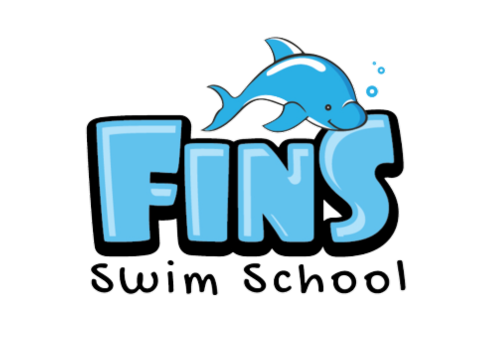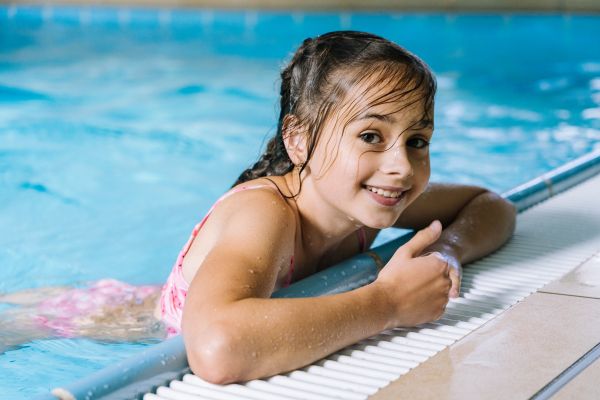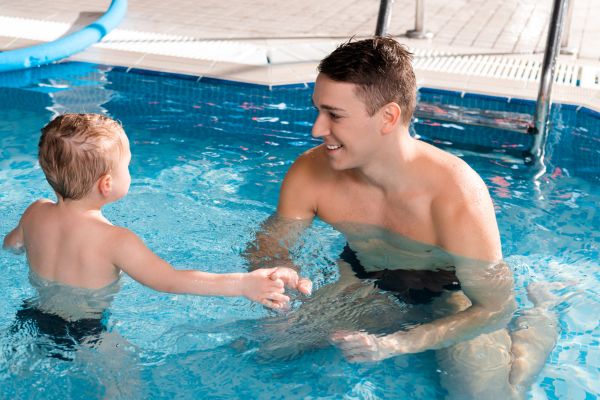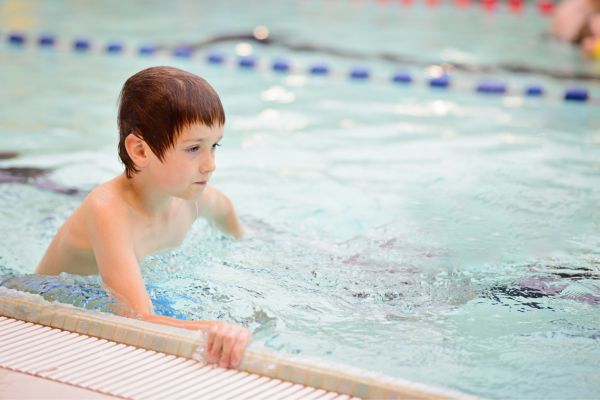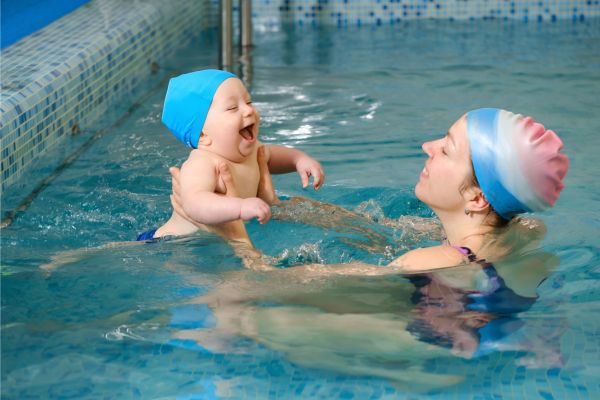Survival Swimming Lessons
Invaluable Lifesaving Skills for Your Child — Taught With Fun!
✔ For non-swimmers!
✔ Any age from 2.5 to 13/14 years.
✔ Fun, yet safe, environment.
✔ Two stages of advancement.
✔ Run throughout the year!
Survival Swim Lessons in Kotara, Newcastle
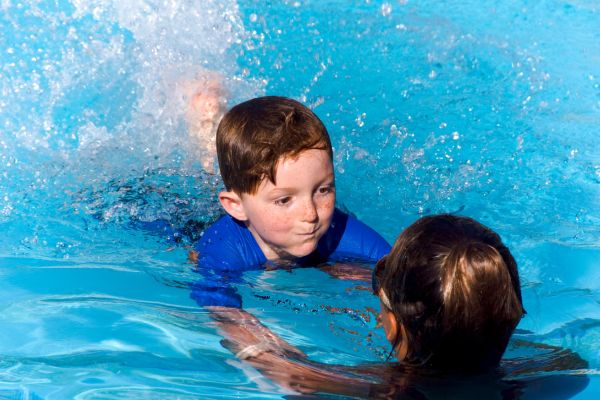
Working both as a standalone course and a preliminary stage in our Learn-to-Swim program — FinS’ survival swimming lessons are crucial aquatic education tools that could save your child’s life.
Available for non-swimming children from 2.5 to 13/14 years, the program aims to instil invaluable water survival habits into your youngster — before they learn swimming strokes.
Under the expert guidance of our safety-conscious instructors, your child will absorb powerful self-saving techniques that become second-nature — through fun and relaxed water training!
Our Swimming Survival Course Could Save Your Child’s Life
Survival Swim Classes Structure
Our Survival Swimming program isn’t about smooth breaststrokes or powerful crawls — that comes later in our Learn-to-Swim course. Instead, it provides your child with the immediate aquatic skills they need to save their life.
Through constant repetition, scenario simulation, and patient tuition, your youngster advances through two levels of achievement. Only progressing once they have conquered the required techniques, your little one will complete the course being able to instinctively face water mishaps.
While the course is comprehensive, it mainly focuses on the following four areas:
Our Survival Swimming program isn’t about smooth breaststrokes or powerful crawls — that comes later in our Learn-to-Swim course. Instead, it provides your child with the immediate aquatic skills they need to save their life.
Through constant repetition, scenario simulation, and patient tuition, your youngster advances through two levels of achievement. Only progressing once they have conquered the required techniques, your little one will complete the course being able to instinctively face water mishaps.
While the course is comprehensive, it mainly focuses on the following four areas:
Turn and Return
The first and most important skill. When children enter any body of water, the safest place for them to return is nearly always straight back to where they came from — whether that’s a boat, beach, riverbank, or poolside.
Our program makes this critical safety technique second nature. Whenever they enter the pool, even in more advanced classes, they must always return to the side.
Arms Under the Water
Non-swimmers, whether children or adults, instinctively elevate their arms when they’re struggling in the water — in a vain attempt to escape or raise alarm. The issue is, that elevating the arms makes their bodies vertical, causing dangerous fatigue.
Our junior and infant survival swimming lessons imprint on your youngster the importance of keeping their arms below the water line. A valuable energy-saving skill.
Strong Kicking
The legs contain your child’s biggest muscle group, and therefore need to be used effectively in a horizontal position. While we don’t focus on particular swimming strokes in the survival program, efficient use of the lower limbs is crucial.
Through repetition and the extensive use of floats, your youngster will grow in aquatic leg strength and habits.
Back Floats
Floating on the back is a powerful water survival technique that’s within the capabilities of non-swimming children!
Keeping the face reassuringly above the water, it’s a strong energy-conservation skill — permitting the child to both rest and wait for third-party assistance. Furthermore, the ability to float is a vital component in later stroke development.
Strong Kicking
The legs contain your child’s biggest muscle group, and therefore need to be used effectively in a horizontal position. While we don’t focus on particular swimming strokes in the survival program, efficient use of the lower limbs is crucial.
Through repetition and the extensive use of floats, your youngster will grow in aquatic leg strength and habits.
Back Floats
Floating on the back is a powerful water survival technique that’s within the capabilities of non-swimming children!
Keeping the face reassuringly above the water, it’s a strong energy-conservation skill — permitting the child to both rest and wait for third-party assistance. Furthermore, the ability to float is a vital component in later stroke development.
Two-Stage Development
In our Swim and Survival program, your child progresses through two levels of proud achievement:

Stage 1
Tadpoles
- Kick and eyes in the water.
- Dog paddle — very little arm use, and arms under the water.
- Back float.
- Enter and return to the wall (assisted).

Stage 2
Frogs
- Kick, eyes in the water, and blowing bubbles.
- Dog paddle with bubbles.
- Enter, back float and return to the wall.
Why Survival Comes Before Swimming Strokes
The preliminary stage of our Learn-to-Swim course is always survival, not strokes — because a smooth, splash-free crawl technique is of little help if your child is drowning. Your youngster could fall unexpectedly into the water tomorrow. Their most important instincts should be to remain buoyant, conserve energy, and if possible, exit the water immediately. And, these key priorities still apply whether they’re a non or advanced swimmer.
The basics of survival can be taught rapidly, perfect swimming technique takes longer. Even with a few survival lessons under their belt, your child has a distinct advantage should aquatic mishaps occur.
Furthermore, to learn to swim, your child has to be in the swimming pool. Therefore, they must have the necessary water self-preservation skills prior to tuition.
And finally, the basics of survival — such as turn and return, face in the water, blowing bubbles, leg power, and buoyancy — form the basis of every future swimming stroke.
That’s why, at FinS, survival must always come before strokes.
Furthermore, to learn to swim, your child has to be in the swimming pool. Therefore, they must have the necessary water self-preservation skills prior to tuition.
And finally, the basics of survival — such as turn and return, face in the water, blowing bubbles, leg power, and buoyancy — form the basis of every future swimming stroke.
That’s why, at FinS, survival must always come before strokes.
The Incredible Benefits of Swimming Lessons for Children
Naturally, the most important advantage of survival water lessons is that they can save your child’s life. But, your youngster also receives the benefits of:
✔ Awareness — learning about the threats that water can pose, and how to avoid and cope with them.
✔ Foundation for swimming lessons — survival techniques are the building block on which all strokes and in-water skills are built.
✔ Aquatic comfort — a confident child in the water is a safer child.
✔ Relieves anxiety — by knowing survival techniques, your youngster will be less worried about taking lessons.
✔ Building excellent water habits — such as turn and return, blowing bubbles, and arms under the water.
✔ Improves physical fitness and increases lung capacity, assisting your child in all other sports.
✔ Swimming develops lung health, giving children help for asthma and respiratory diseases.
In addition to our survival swimming lessons, we also provide three intensive Safety Weeks during the year. Available to swimmers of all ages and abilities, it teaches more advanced survival techniques — such as swimming without goggles, immersion while wearing clothes, and basic CPR.
Swimming Survival Lessons at a Glance
When Can We Start?
Our swimming survival programs run throughout the year. The length of the course depends on how rapidly they progress through the stages — when completed, they’re ready for the Learn-to-Swim program.
How Old?
Your child can start their survival swimming classes at any time of year. They must be between the ages of 2.5 to 13/14 years.
What Do We Need?
- Swimwear.
- Provided swim cap.
- Rash shirts are allowed but not essential.
- Children must be left unaccompanied in the pool — no parents in the water!
- Towel.
Swimming Survival Programs FAQs
Does My Child Need Goggles for the Swimming Survival Program?
No. The course teaches children how to cope with being in the water without eye protection — simulating what may happen if they fall into the sea or a river.
Do You Offer Baby Survival Swimming Lessons?
Our Survival Swim program is available for all children — from 2.5 years upwards. Younger infants can participate in our baby swimming lessons.
Is It OK if I Watch My Child’s Survival Swimming Lessons?
Sure! Many children benefit from having parents, guardians, and other family members watching them! They enjoy their loved ones witnessing their amazing aquatic achievements. Furthermore, it can boost confidence in nervous little ones.
How Can I Help My Youngster During the Survival Lessons?
The one thing you can’t do is be in the pool with them! You may not be around if they fall into the water — so they need the experience of coping on their own.
That said, you can help by:
- Chatting about any upcoming lessons excitedly and positively, they take cues from you.
- Coming to the pool in good time. This prevents rushing around and helps to calm your child.
- Staying within the viewing area, but allowing yourself to be seen by your little one/s if they need visual support.
- When possible, make eye contact with your offspring.
- Being ready when they leave the water for some encouraging words, smiles, oodles of praise, and the biggest of hugs.
How Old Does My Child Need To Be for Infant Rescue Swim Lessons?
Our Survival Swimming program for non-swimmers is available for children aged between 2.5 and 13/14 years. Furthermore, we offer three intensive Safety Weeks during the year. Available to swimmers of all ages and abilities, it provides more advanced survival and rescue techniques.
Does My Child Need to Be Able To Swim for the Survival Classes?
No. You don’t need to learn to swim to survive!
Our survival swimming classes target non-swimmers, and are the first steps of our Learn-to-Swim program.
Why Choose FinS Swim School?
Free Infant Classes – Baby Swim
Offered every month, our FREE baby swimming classes provide a fun, giggle-packed four-week course that builds early years water confidence.
Swimmer’s Assessment
Our free, 10-minute assessment ensures your child joins the most suitable program for effective and rapid results.
Pool and Water Quality
Our medical-grade pool water is sterilised using modern UV light and ozone — with no unpleasant chlorine.
Holiday Programs
An intensive, five-day/one-week course that rapidly builds new swimmer skills, or improves more advanced swimmers’ techniques.
